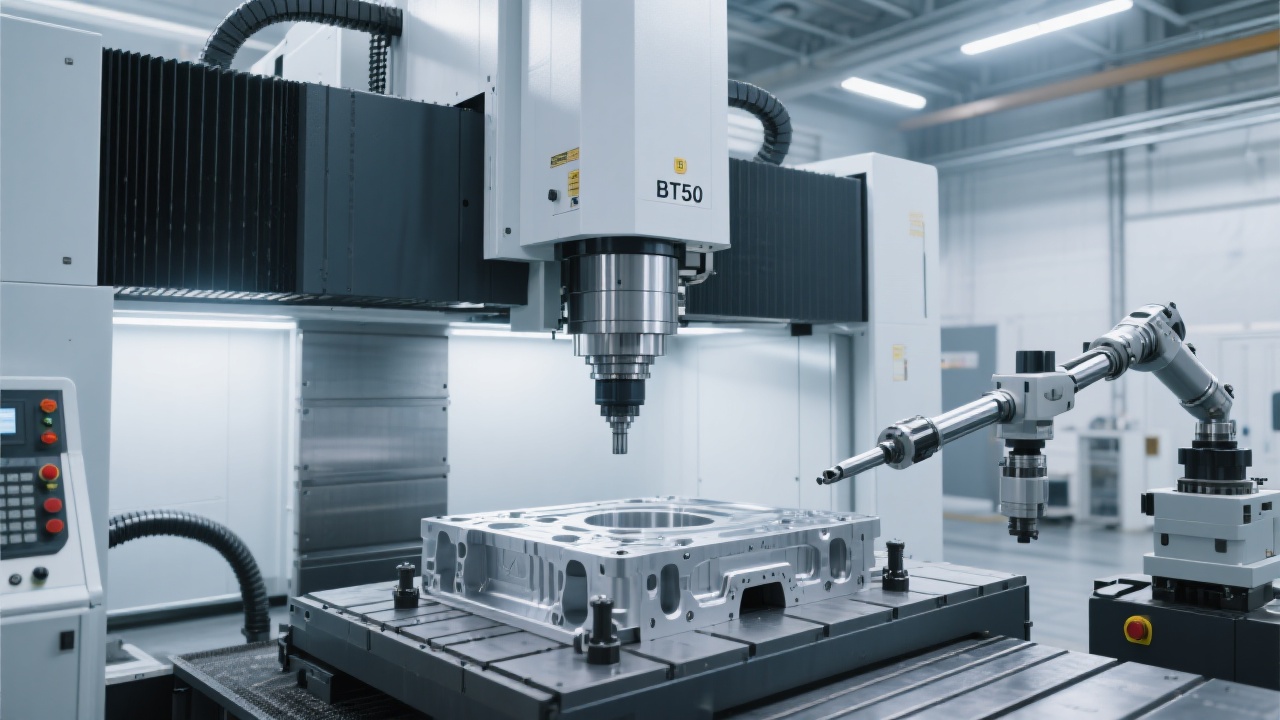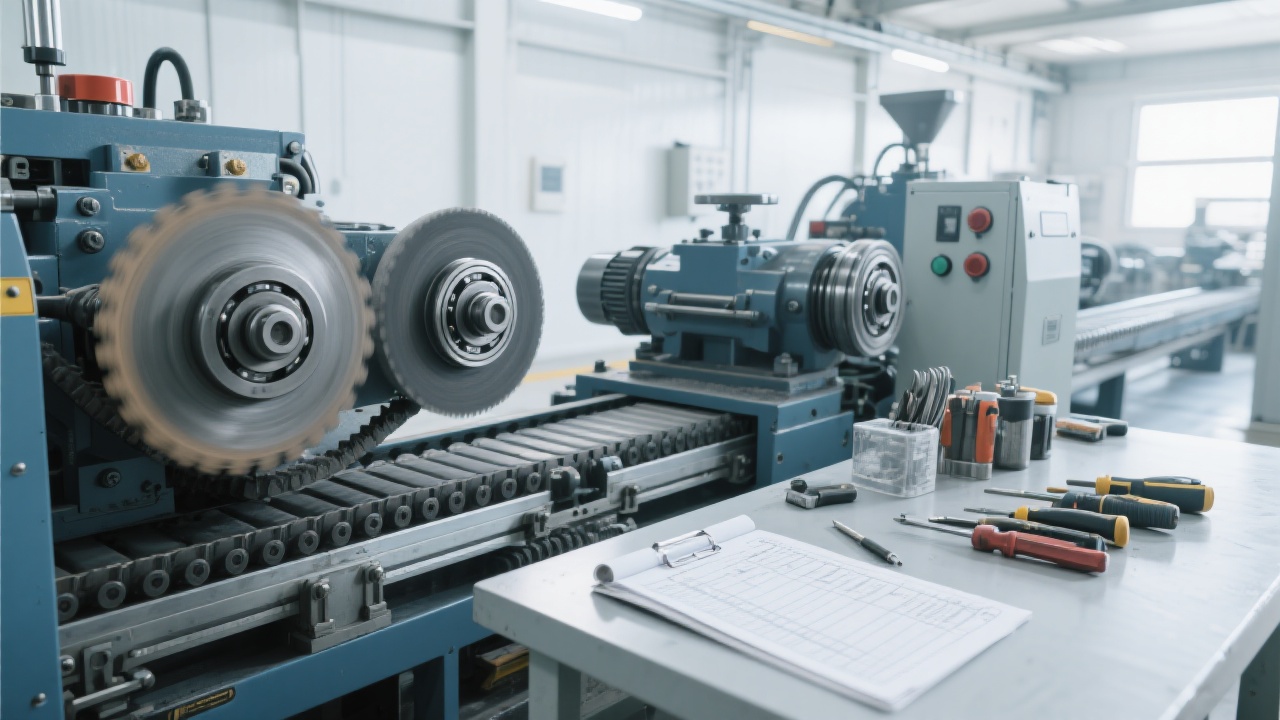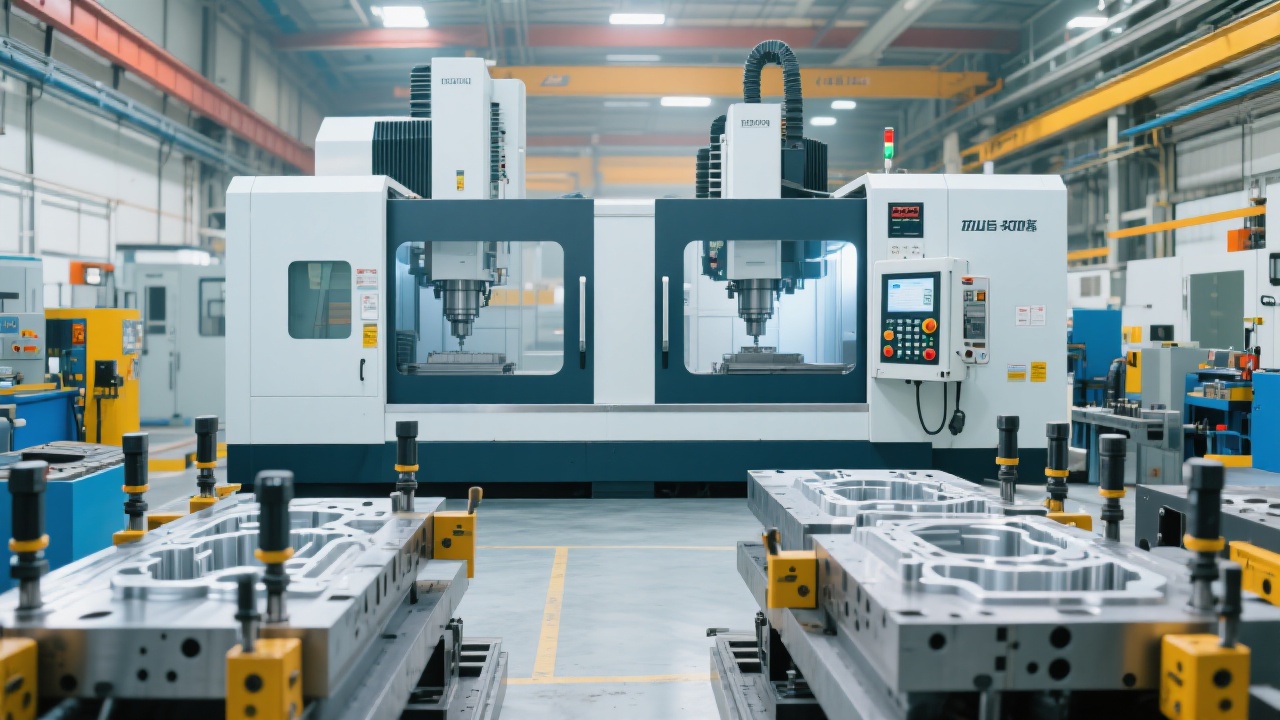
In the field of iron mold manufacturing, achieving machining stability and precision is paramount to maintaining product quality and operational efficiency. The DC1113 Iron Mold CNC Milling Machine is engineered with a robust structural design that addresses these stringent demands. This article offers a comprehensive technical analysis of the DC1113’s key structural features—specifically its mobile bridge, fixed crossbeam, and fixed worktable—and explicates how these elements collectively enhance machining stability and accuracy. Supported by empirical data and practical use cases, this analysis serves as a valuable reference for engineers and procurement professionals aiming to optimize their iron mold production processes.
The mobile bridge design is a defining characteristic of the DC1113, where the gantry moves along linear guide rails while the worktable remains stationary. This arrangement significantly reduces vibration transmission during high-speed milling operations. Unlike conventional fixed-bridge configurations, the mobile bridge allows for smoother travel and minimized mechanical backlash. Finite element analysis (FEA) simulations conducted during product development indicated an improvement of up to 25% in structural rigidity under dynamic loads compared to competing models.
By intelligently controlling inertia forces via the mobile bridge mechanism, the DC1113 maintains exceptional positional accuracy, with repeatability better than ±0.005 mm under typical iron mold machining conditions. This heightened stability is essential when processing high-hardness iron materials, where even slight chatter can compromise surface finish and dimensional tolerance.
Complementing the mobile bridge, the DC1113 utilizes a fixed crossbeam and fixed worktable design. This configuration secures the workpiece firmly during milling, minimizing deflection and thermal expansion effects that can degrade machining precision. The fixed crossbeam acts as a reinforcement backbone, effectively distributing cutting forces and preventing micro-movements that commonly lead to geometric deviations.
The fixed worktable ensures repetitive positioning accuracy, with empirical tests recording positioning errors within 0.007 mm over extended production cycles. Its surface is precision-ground and treated for wear resistance, contributing to reduced tooling downtime by enhancing fixture stability. This combination of fixed elements also simplifies setup times, which in field audits was shown to reduce changeover duration by up to 15% in typical iron mold production lines.
Iron mold processing frequently encounters challenges such as excessive tool wear, vibration-induced surface imperfections, and diminished dimensional accuracy due to thermal deformation. The DC1113’s integrated structural design effectively mitigates these issues:

A prominent manufacturing partner in Southeast Asia implemented the DC1113 to upgrade its iron mold production line. Prior to this, their milling operations struggled with vibration-induced surface roughness and dimensional deviations exceeding ±0.015 mm, resulting in a 12% rework rate.
After installing the DC1113, the customer reported:
| Performance Metric | Before DC1113 | After DC1113 |
|---|---|---|
| Rework Rate | 12% | 3% |
| Machining Precision (Tolerance) | ±0.015 mm | ±0.005 mm |
| Tool Life Increase | N/A | +20% |
This tangible improvement not only heightened their production efficiency but also reduced scrap costs by approximately 18%, demonstrating the significant ROI of the DC1113 structural innovations.

The DC1113’s structural framework is a culmination of design precision tailored to the rigorous requirements of iron mold machining. The interplay between the mobile bridge's dynamic stability and the fixed crossbeam and worktable’s rigidity forms the foundation for:
Manufacturers aiming to elevate their iron mold machining capabilities should consider how these structural advantages can directly impact their operational KPIs.

The page you're looking for dose not exist.
Let's get you back home.
It will jump automatically after 5 seconds!
Go Home